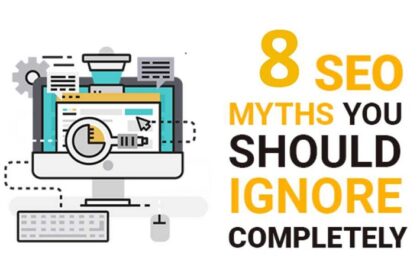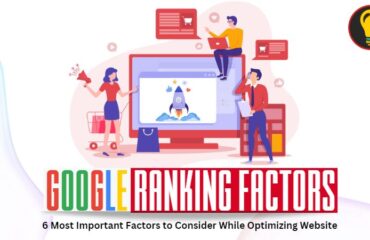
When it comes to SEO, there are misunderstandings, misinformation and misconceptions. According to what most of people claims, Google do behaves as such of a black box for limiting the gaming of SERPs.
Nonetheless, in recent times, some of the SEO experts have reported Google taking several noticeable steps for becoming more transparent via increasing activity in the SEO community.
No matter whether it’s speaking engagements at conferences, regular webmaster hangouts or insightful metaphors on Twitter, the likes of Gary lllyes, John Mueller and Danny Sullivan at Google have helped a lot in eliminating the myths of SEO.
So, for banishing all these SEO myths, here we have put together a list of 7 common misconception about Google and SEO along with reason why they are wrong.
Myth 1: Google Penalizes Duplicate Content
In SEO community, it’s a myth that Google penalizes duplicate content.
However that’s not the fact at all.
Term such as ‘Duplicate Content’ doesn’t even exist at all.
Google doesn’t penalizes sites for having duplicate content.
Google is aware of the fact that duplicate content is a natural part of the web. So, in-spite of focusing onto the content’s duplicate, it do aims at indexing the highest quality and most relevant page. Via this it ensures that searches are not repeatedly presented with the same content in the search results.
Google does not like a site which tries to manipulate rankings and comprises of total duplicate content. But it doesn’t mean that it penalizes it for doing so. It instead fold the similar pages together in the index and shows an alternative version of the page.
In SEO, it is possible to provide search engine with a number of signals indicating the pages which are to get indexed. These signals include correct usage of canonical, sitemap inclusion and internal links pointing to the referred page.
Myth 2: Google Respects the Canonical URL as the Preferred Version Regarding Indexing
Majority of the people doing SEO thinks that just because they have set a URL as the preferred version for indexing through a canonical tag, Google would surely index it.
However, that’s not true.
Setting an URL does not mean that it would get indexed by Google.
Actually the rel canonical is treated as just a signal by Google regarding the preferred page and so is not always respected.
You can find such instances in the new version of Google Search Console in the Index Coverage report under the flag ‘Submitted URL not selected as Canonical’.
It might be possible that Google select a page other than the one which you have submitted as the canonical. It usually happens when Google judge another page among duplicates better ones to show in SERPs.
So while selecting a page as the canonical, it is here advised to consider whether the selected page is actually the one that you want to get indexed.
Myth 3: Google has 3 top ranking factors
In 2016, Andrei Lipattsev announced links, content and RankBrain the top 3 Google Ranking factors.
However, Mueller dismissed the statement in a Webmaster hangout, saying that it is just not possible to determine the most vital ranking factors as it changes on daily basis from query-to-query.
Thus, according to him, when it comes to ranking, it is not helpful to only focus onto the individual ranking signals. This is because of the fact that search engine algorithms are highly sophisticated for this to be a useful method of conceptualizing algorithms.
Instead one should focus onto optimizing his/her sites to improve the user’s experience, match user intent and the most important thing improve site quality while keeping up to date with the Google’s latest developments.
Myth 4: Google values backlinks from all the high authority domains
Usually SEO professionals consider authority and relevancy of the backlinks pointing to the target site as an important factor in successful link building. According to them, relevancy does not matter on such extent.
Nonetheless, as per views stated by IIIyes’ BrightonSEO Q&A, Google takes into account the content of backlinks. Means SEO pros perhaps give more importance to the link relevancy when going after links.
According to IIIyes, despite of the fact that there is value in fixing the internal and external links, it is yet important to keep context in mind.
Note: In a case if a poor quality article (that has nothing to do with your site) links to your site, Google will simply ignore it since the context doesn’t match.
Myth 5: Google consider page speed as a major ranking signal
Since 2010, Google has utilized site speed as a ranking signal. So, due to this it is obvious that you would think that they have a smart way of incorporating it as a key part of their algorithms.
However on the contradiction of all these, Muller explained, while there are plans of introducing a speed update in 2018, Google only utilized speed for differentiating between slow pages and the ones those are in the normal range.
What’s more!!!
In a study, it has been confirmed that Googlebot crawls and index only those pages which takes up to three minutes to respond.
Despite of the fact that speed might indirectly influence rankings via feed-backs from user experience, in reality Google’s usage of speed in their algorithms is rudimentary for the time being.
Myth 6: Google’s Sandbox applies a filter when indexing new sites
Among SEO community, it is a common misconception that Google do applies a filter to all the new websites for pausing spammy sites from ranking soon after launch.
Nonetheless, that’s not true…
Muller put the Google sandbox to bed in a Webmaster Hangout, referring all this concept wrong, when he said:
There was no such filter being applied to new sites.
He further added, there might be a set of algorithms appearing similar to a sandbox, but that they actually attempt to understand how the site fits in with other trying to rank in the same niche.
Myth 7: Quality updates result in algorithmic penalties
Recently in an interview, former Google engineer Fili Wiese speaking about the myth of algorithmic penalties said:
“One misconception that often exists is around things like Google Panda or Phantom as the industry called it, or Fred. Quality updates basically. But people think those are penalties or algorithmic penalties (when they’re not).
The thing is there is no such thing as an algorithmic penalty, it’s actually a recalculation. It’s like a big black box with the formula inside, you put something in, something comes out, and what comes out is the rankings and what goes in is your website.
The algorithm changes are just basically changes within the black box, which means that what comes out on the other side is slightly different now. Does that mean you’ve been penalized? No. it may feel like it, but you’re not penalized.”
This is a subtle difference which Wiese raises, however an important one is understanding how Google’s search algorithms operate.
Myth 8: The ‘S’ in HTTPS doesn’t matter
The ‘S’ in HTTPS stands for ‘Secure’. It is mostly preceded by a little lock icon before the URL field in your respective browser.
A secured website helps keep intruders, spam artists and hackers from accommodating vital credentials such as credit card data, from your customers.
In a case if you haven’t made your website secured yet, it is hereby advised to keep it at the top of your SEO to-do-list.
So, here blog comes to an end. Hopefully it has helped you out in killing off some of your long-held sacred cows of SEO.
When it comes to SEO, there are facts and myths. And it’s totally up to you what you are believing. Here being your well-wishers, we would like to suggest you to ensure of focusing just on the facts, and not the fairy tales.




